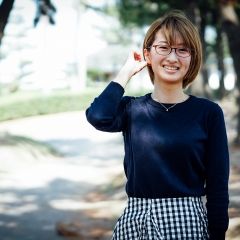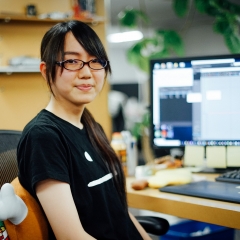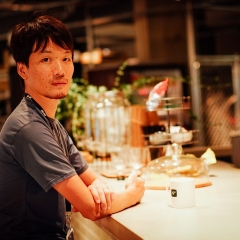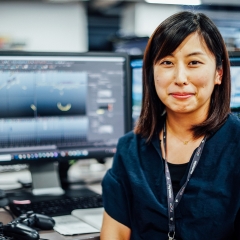WHO WORKS HERE
People Staff Interview
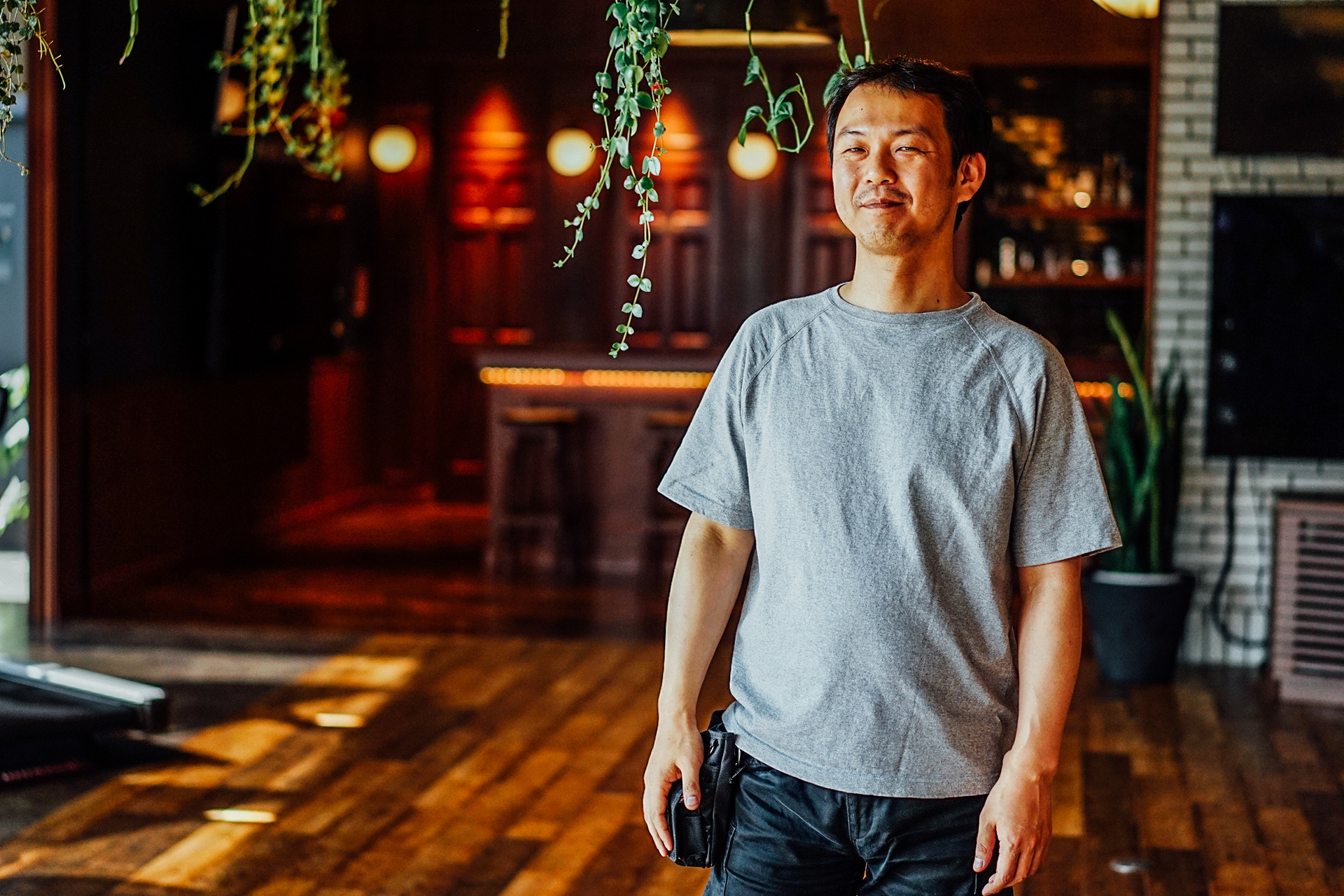
Technical Artist

STAFF INTERVIEW
Joined Polyphony Digital in 2007 after working at another video game company. Has worked on course production as a CG artist on the Course Team since Gran Turismo 5 Prologue. Currently serving as a Technical Artist, responsible for verifying graphics systems, optimising and streamlining production workflows, and introducing as well as supporting modern technologies for artists.
-
A childhood spent drawing and playing video games
While most artists in the game industry typically enter the field after graduating from art universities or vocational schools, my route was somewhat rare. I loved to draw since I was little. Influenced by my father, who was a researcher, I was somewhat of an overly analytical, glasses-wearing kid, but also very imaginative, and was always on the lookout for outlets to express my creativity. At school, I always looked forward to the art and craft time. I served as the head of the art department in junior high and high school, and made various things over the years, from paintings to manga illustrations and 3D drawings. However, I never imagined turning it into a career or attending art school. It was something I saw as a completely different world, one reserved for special people who had undergone elite training from an early age, like pianists or violinists.
I first came across video games around the age of four or five. My first experience was seeing Pac-Man, the arcade machine and Atari games in the United States. The fact that you could control what was happening on the TV, which until then had only ever shown programmes, was completely amazing. Being able to step into a fantasy world that would react to my actions was incredibly exciting.
From then on, I was hooked on video games, spending every bit of time and money I had on them. Just as people say that novels stimulate the imagination more than movies or anime, I found that the understated worlds in games, with all the space they left for interpretation, truly sparked my imagination, and so I'd often draw illustrations of those worlds. I also dabbled a little with video game programming with BASIC. At the time, there were bands and such that were popular, but for me, it was all about video games. Sometimes I wonder if I missed out on certain experiences as a student, but it was those very years that laid the foundation for me, 30 years on, being able to pour my love into gaming.
-
Encountering 3D computer graphics and getting into the game industry
I went on to university and majored in architecture and urban engineering, vaguely thinking it might involve some drawing, such as perspective sketches and diagrams, but this turned out to be a major turning point. It was the first time I encountered the concept of design as something driven not just by the senses, but also by logic, and it gave me a way to connect my logical way of thinking with visual expression. I studied very hard, and I still value the way our professor taught us that design is not something to "create" but to "solve".
Also, the late 1990s were a time when home PCs were exploding in popularity, and it was also when high-end 3D computer graphics technology, which previously had only been available in professional video production sites, became available at a price range that students could just about afford. I initially created presentation renderings, but I became deeply fascinated, just as I am with design, by how 3D computer graphics, through logical physics-based simulations, which are the opposite of artistic flair, could produce breathtakingly beautiful visuals.
When it came time to look for a job, I thought about what I wanted to do and decided that I wanted to keep drawing. I didn't think I could truly compete with those who had formal art school training, but I felt that by combining my computer graphics skills, which were still uncommon for students at the time, with my deep enthusiasm and knowledge of games I'd grown up with, I might have a shot at breaking into the game industry. I started looking for jobs with the attitude that if it didn't work out, that would be the end of it, but to my surprise, it went really well, and I got my first job in the industry working at SEGA.
-
Moving to the home of Gran Turismo
At SEGA, I was taught the fundamental concepts and techniques unique to video game computer graphics, and above all, I learned how to work with engineers. No matter how good you get at computer graphics, you're stuck within the limits of the software's features, but if you collaborate with the engineers, you can fundamentally transform an entire rendering system. At the time, the quality of computer graphics was far behind the still images I had created as a student, but the collaborative process of pushing the limits of the hardware to achieve the images you wanted was creative and really interesting. I would think about systems together with the engineers, have them write programs, and then I'd create good images in return. It was a simple thing, but it made me realise just how fun work could be.
I moved to Polyphony Digital in 2007, in the seventh year of my career, shortly after the PlayStation 3 launched. They were looking for someone with strong skills in architecture, civil engineering, and urban design to enhance the realism of the tracks, and I was offered a position. Gran Turismo has always had great-looking graphics, and I was eager to meet the incredible people behind it. Also, it was one of the top companies in Japan, so it really was like a dream coming true. I was very happy and felt like everything up to that point had come together.
Gran Turismo 5 Prologue was in development at the time, and I was really surprised that even though it was a series with repeated success and a very stable framework for reproducing motorsports, it felt like we were creating something completely new from scratch. Rather than building on what had already been made, this company was willing to measure and reevaluate based on the technology available at the time, take the time to create the necessary production environment in-house, and put in the effort to repeatedly verify the results. The engineers and artists driving this outrageous and honest process are incredibly talented. I've been solely making Gran Turismo games for the past 10 years, and while it may seem like it would be the same work every time, it's actually amazing how it still brings constant surprises and discoveries.
-
People who should consider Polyphony Digital
Please don't think of PDI as a company that just makes games where cars race. That part of Gran Turismo is just the surface layer, and beneath it lies an incredibly large foundation that makes it all possible. Car racing is a simple platform, so the real challenge is what kind of premium can be added beyond that. Whether it's mathematics, physics, meteorology, astronomy, mechanics, architecture, flora and fauna, sports, or photography, if you are an expert of some kind, then you should be able to find points where you can interconnect with Gran Turismo and transform it. If you can do that, you'll be able to participate and contribute freely, no matter the field.
From my point of view as a TA (technical artist), if we want to make visuals that look more real, then we've got to model the things that occur in reality. It would be great to have someone with a strong background in subjects like physics and chemistry join the team and contribute their insights.

